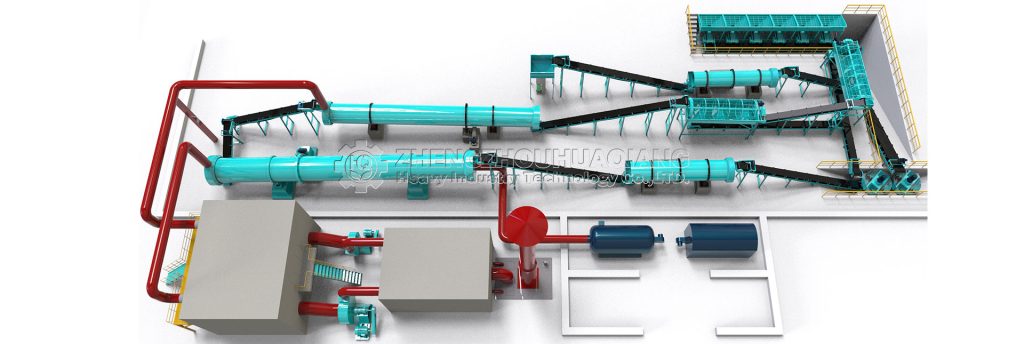A complete NPK compound fertilizer production line is like a precision-operated “nutrient production assembly line.” From raw materials to finished product, various equipment performs its functions and works closely together to efficiently convert nitrogen, phosphorus, and potassium into high-quality fertilizers for crops, becoming a key support for increasing production in modern agriculture.

The NPK fertilizer production line begins with raw material processing. Lumps of raw materials, such as urea, ammonium phosphate, and potassium chloride, first enter a cage crusher, where they are pulverized into a fine powder. This fineness allows for full contact between the different nutrients, preventing subsequent uneven mixing. The crushed materials then enter the batching scale, where an automated control system precisely mixes the fertilizers, for example, to a 15-15-15 ratio of nitrogen, phosphorus, and potassium, with an error control of within ±0.5%, ensuring consistent nutrient content throughout each batch.
After the proportions are finalized, the raw materials enter the double axis mixer. Driven by high-speed rotating blades, they are thoroughly stirred with a small amount of binder (such as polyvinyl alcohol solution) to form a mixture with uniform moisture. If the moisture content of the mixture is too high, the hot air pre-dryer will start to reduce the moisture content to 25%-30%, preparing for the granulation process. Next, the rotary drum granulator enters the stage. It rotates the inclined drum body to roll the mixture into granules with a diameter of 2-4 mm. The granule formation rate can reach over 92%, and the surface is smooth and not easy to break.
After granulation, the pellets first enter a drum screening machine to remove overly coarse or fine particles. Coarse particles are sent back to the crusher for further processing, while fine particles are returned to the mixer for secondary granulation, ensuring full raw material utilization. Qualified pellets then enter a drum dryer, where 120°C hot air quickly reduces the moisture content to below 10%, preventing clumping during storage. The dried pellets are still hot and need to enter a cooler, where cold air circulates to cool them down to room temperature and further remove any residual moisture.
Finally, the granules pass through a coating machine, where they are sprayed with a slow-release film to extend the nutrient release period. They are then weighed and sealed by an automatic packaging machine. After introducing this production line, a European fertilizer plant increased its daily output of NPK compound fertilizer from 200 tons to 350 tons, reduced labor costs by 30%, and gained an excellent reputation among local farmers. This coordinated production line has made efficient and high-quality NPK fertilizer production a standard practice.





